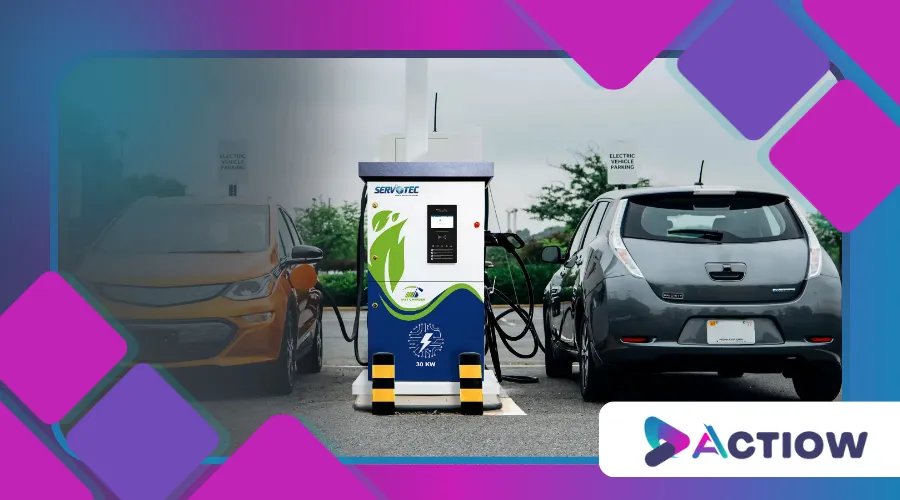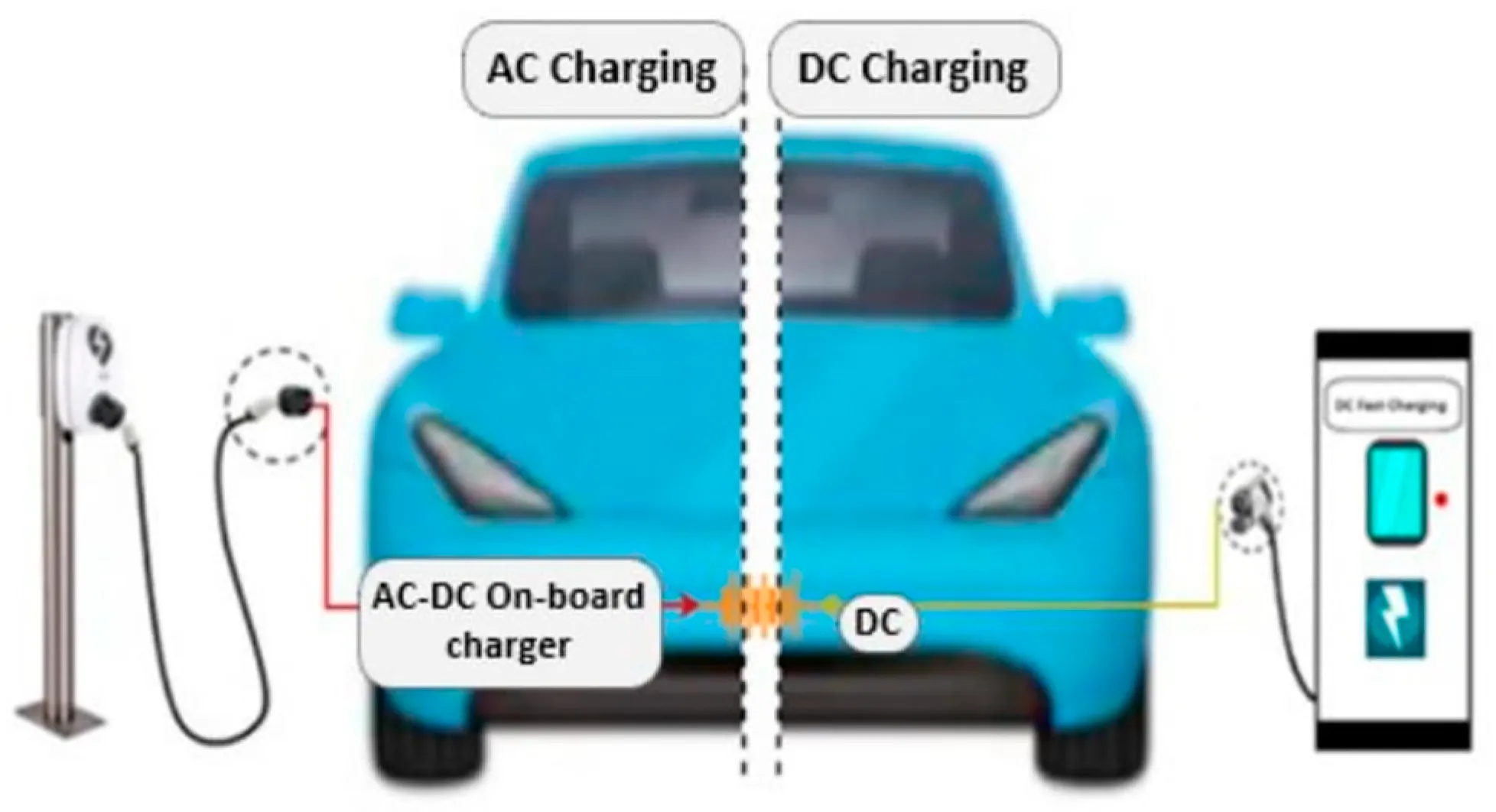Fast Charging Technology for Electric Cars

Anúncios
The automotive industry is undergoing a seismic shift, and Fast Charging Technology for Electric Cars sits at the heart of this transformation.
No longer a luxury, rapid charging is becoming a necessity as EV adoption surges globally.
But how does it work, what are its limitations, and why is it critical for the mass adoption of electric vehicles?
Anúncios
This deep dive explores the mechanics, benefits, and challenges of ultra-fast charging, while analyzing how it compares to traditional methods.
We’ll also examine real-world applications, future advancements, and whether it truly lives up to the hype.
As electric vehicles (EVs) gain popularity, addressing the infrastructure needs becomes paramount.
Fast charging technology not only enhances convenience but also plays a crucial role in reducing carbon emissions associated with transportation.
Understanding the nuances of this technology will empower consumers and investors alike to make informed decisions about the future of mobility.
Moreover, the integration of renewable energy sources into fast charging infrastructure can further enhance sustainability.
By utilizing solar or wind energy, charging stations can operate with minimal environmental impact, promoting a greener future for electric mobility.
In addition, as the demand for electric vehicles continues to rise, automakers are investing heavily in research and development to improve battery technologies.
This focus on innovation will likely lead to breakthroughs that enhance the efficiency and speed of charging systems, ultimately benefiting consumers and the environment alike.
How Fast Charging Technology for Electric Cars Works
Unlike conventional charging, which can take hours, Fast Charging Technology for Electric Cars leverages high-power DC currents to replenish batteries in minutes rather than hours.
These systems bypass the car’s onboard converter, directly injecting energy at rates exceeding 350 kW—enough to add 200+ miles in under 20 minutes.
Key Components:
- High-Power Charging Stations (350 kW+)
- Thermal Management Systems (Preventing battery degradation)
- Advanced Battery Chemistries (Silicon-anode, solid-state)
| Charging Type | Power Output | Time for 200 Miles |
|---|---|---|
| Level 1 (AC) | 1.4 – 2.4 kW | 50+ hours |
| Level 2 (AC) | 7 – 22 kW | 8 – 12 hours |
| DC Fast Charging (DCFC) | 50 – 350 kW | 10 – 30 minutes |

+ Cars with Facial Recognition: Technology at the Service of Safety
The race for faster charging isn’t just about convenience—it’s about eliminating “range anxiety” and making EVs viable for long-distance travel.
Moreover, advancements in fast charging technology are paving the way for a more sustainable future.
As battery technologies evolve, we can expect even greater efficiencies and reduced charging times.
This evolution is essential for ensuring that electric vehicles can compete with traditional gasoline-powered cars in terms of convenience and usability.
In addition, ongoing research into ultra-fast charging methods aims to optimize energy transfer and minimize heat generation.
These innovations can lead to longer battery life and improved overall performance for electric vehicles, making them even more appealing to consumers.
Furthermore, as fast charging technology becomes more widespread, we may see a shift in consumer behavior, with more drivers opting for electric vehicles due to the growing convenience of charging.
This shift could accelerate the transition to electric mobility, making it a more mainstream choice for everyday drivers.
The Real-World Impact of Ultra-Fast Charging
Adoption of Fast Charging Technology for Electric Cars is accelerating, with networks like Tesla’s Supercharger V4 and Electrify America’s 350 kW stations leading the charge.
According to BloombergNEF, global fast-charging points will grow from 460,000 in 2023 to over 1.2 million by 2026.
But speed comes with trade-offs:
- Battery Longevity: Frequent ultra-fast charging can degrade lithium-ion cells up to 10% faster.
- Grid Strain: A single 350 kW station draws as much power as 50 homes.
- Cost: High-power infrastructure is expensive, slowing rural deployment.
| Fast Charging Network | Max Power | Coverage (2024) |
|---|---|---|
| Tesla Supercharger | 250 kW | 45,000+ stations |
| Electrify America | 350 kW | 3,500+ stations |
| Ionity (Europe) | 350 kW | 2,000+ stations |
Despite hurdles, automakers like Porsche, Lucid, and Hyundai are pushing boundaries, with some EVs now capable of 10-80% charges in under 18 minutes.
Real-world applications of fast charging technology are also expanding, with partnerships between automakers and charging networks becoming increasingly common.
These collaborations aim to create a seamless charging experience for users, enhancing the overall appeal of electric vehicles.
As the infrastructure evolves, public acceptance of EVs is likely to grow, further driving the transition to sustainable transportation.
Additionally, governments are beginning to recognize the importance of fast charging infrastructure, leading to increased funding and support for development.
This investment can help accelerate the rollout of charging stations, making electric vehicles more accessible to a broader audience.
Moreover, consumer education is vital to maximize the benefits of fast charging technology.
As more drivers understand the advantages and capabilities of fast charging, they may be more inclined to switch from traditional vehicles to electric ones.

++ Electric Cars 2025: Discover the Models That Will Dominate the Roads
The Future: What’s Next for Fast Charging?
Innovation in Fast Charging Technology for Electric Cars isn’t slowing down.
Emerging breakthroughs include:
- Solid-State Batteries: Promising 500+ kW charging without degradation.
- Battery Swapping: NIO’s model offers a full charge in 3 minutes.
- Vehicle-to-Grid (V2G): EVs could stabilize grids during peak demand.
However, standardization remains a challenge.
While Tesla’s NACS is gaining traction, competing standards (CCS, CHAdeMO) create fragmentation.
This lack of uniformity can hinder the widespread adoption of fast charging infrastructure.
As different manufacturers adopt various technologies, consumers may find themselves navigating a complex landscape of charging options.
Collaboration among industry stakeholders will be essential to establish common standards that facilitate interoperability and enhance user experience.
Moreover, advancements in artificial intelligence and machine learning could optimize charging station operations, improving efficiency and user experience.
These technologies can help manage energy distribution in real-time, ensuring that charging stations operate at peak performance while minimizing costs.
Looking ahead, the integration of smart grid technologies will play a crucial role in managing energy resources effectively.
This integration can enable dynamic pricing models, encouraging users to charge during off-peak hours, thus alleviating grid strain and reducing costs.
For further insights into electric vehicle technology and trends, visit InsideEVs, a comprehensive resource dedicated to electric vehicle news and analysis.
Conclusion: Speed vs. Sustainability
Fast Charging Technology for Electric Cars is undeniably transformative, but its success hinges on balancing speed with battery health, infrastructure scalability, and affordability.
As technology evolves, the dream of “faster than gas station fill-ups” inches closer—but we’re not there yet.
For now, the key takeaway is clear: Fast charging is reshaping EV adoption, but the journey has only just begun.
Investors and consumers alike must stay informed about developments in this rapidly changing field.
By understanding the implications of fast charging technology, stakeholders can better navigate the future of mobility.
Ultimately, the success of fast charging technology will depend on collective efforts from manufacturers, governments, and consumers to create a sustainable and efficient charging ecosystem.
The future of electric mobility looks promising, but collaboration and innovation will be key to overcoming existing challenges.
As the landscape of electric vehicles continues to evolve, ongoing dialogue among all stakeholders will be essential to ensure a successful transition to a sustainable transportation future.
